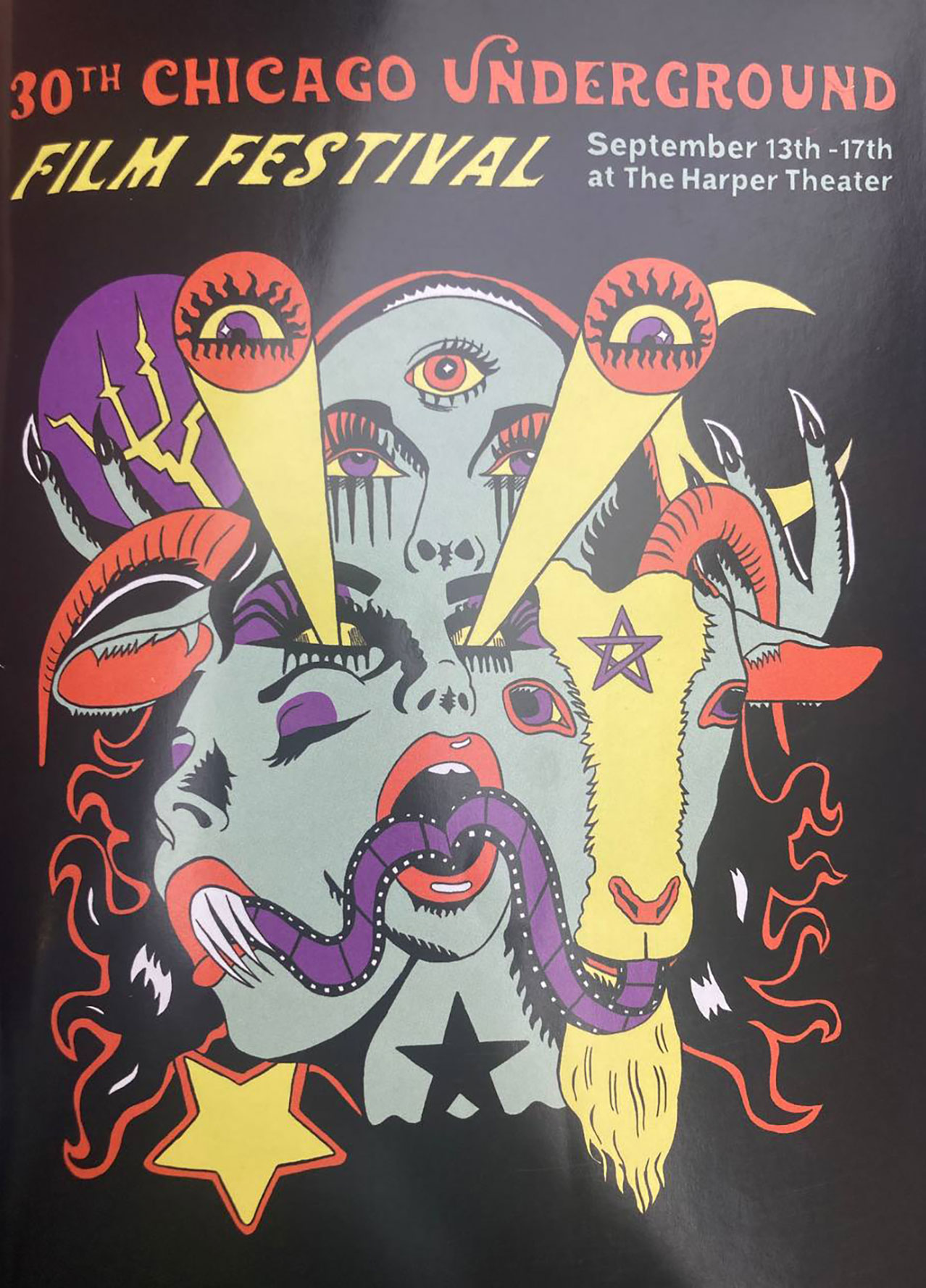Each year in Chicago, a subtle cinematic revolution quietly unfolds amidst the buzz around blockbuster releases, Hollywood remakes, and acclaimed festival hits. For three decades now Chicago Underground Film Festival has been showcasing hidden gems of visual storytelling that defy and redefine the boundaries of film.
This year's program unveiled a kaleidoscope of films, ranging from the masterworks of established filmmakers to the first-time auteurs. From captivating documentaries to musical odysseys and mind-bending experimental shorts, CUFF reaffirmed its commitment to redefining the concept of underground film and embracing the transformative potential of technology including AI-generated content. Here are some other tendencies from the 30th Chicago Underground Film Festival.
On the surface with technology
Curators' dedication to narratives about communities, human experiences, and emotions is seamlessly interwoven with their fascination for pushing the boundaries of modern technology within the realm of film. In two short programs, "(Re)constructed Realities" and "Insightful Misreadings," filmmakers place AI as a central figure in their creative explorations.
For instance, in the film "image to text to image," Bryan Boyce provides viewers with an illuminating glimpse into the AI model's cognitive process, akin to the workings of a human mind, as it processes a series of 21 photos. In a similarly intriguing project, "Retire.ai" invites viewers on a voyage into the world of a retired virtual assistant. Through text, sound, and surveillance camera images, audiences gain insight into the retired AI's leisure activities. This raises an intriguing question: Can it be that machines, like humans, possess a heart?
Repurposing content
Another prevailing trend across the CUFF program was the innovative use of pre-existing content and images in fresh contexts. Filmmakers, spanning from shorts to full-length features, demonstrated that generating entirely new material isn't a prerequisite for crafting a compelling film. Armed with stock photos and music and Hollywood stills, these artists guided viewers on deeply personal journeys through themes of trauma, political unrest, and the passage of time.
In the festival's opening film, "Hello Dankness," Soda Jerk masterfully captures life in the U.S. from 2016 to the present using nothing but found footage. Following an idealized suburban street populated by individuals with varying political affiliations who coexist in an unusual harmony, the film covers the past 50 years of popular culture, presenting a unique perspective on American cultural artifacts.
A different exploration of self and culture is presented in James N. Kienitz Wilkins' "Still Film." The filmmaker uses exclusive 35mm presskit photos sourced from Hollywood blockbusters, crafting a staged deposition to contemplate the role of cinema in our day-to-day existence. Through voiceover narration, Wilkins embodies multiple characters engaging them in spirited debates concerning the impact of cinephilia on both the individual and society.
Humorous lens on a changing world
A notable portion of films from this year’s program have turned to humor and irony as potent tools for depicting the surreal nature of the events unfolding in recent years. The festival's opening film, "Hello Dankness," stands as a satirical chronicle of the socio-political American landscape, featuring key moments such as the 2016 elections and the onset of the COVID-19 pandemic. Crafted from a mosaic of over 500 clips sourced from movies, television, commercials, memes, and news footage, it offers a sharp, witty commentary on these significant events.
Within the short programs, several comedies tackle these same events from various angles of absurdity ("Road Head"), anarchy ("Gary Screams at You"), or anti-utopian perspectives ("Welcome to the Enclave"). Each of these films presents the viewer with an unconventional means to confront the changing world not with tears, but through the liberating power of laughter.
In search for the other
I'd like to conclude by highlighting a film screened on the festival's final day, which symbolically became a manifestation of hope amidst these turbulent times marked by AI advancements, scrutiny of excess production and consumption, and political unrest. "back home" by Nisha Platzer takes the viewer on a personal poetic journey with the filmmaker as she tries to reconnect and get to know her older brother, Josh, 20 years after he took his own life. Through the use of Super 8 and 16mm film, hand-treated with organic materials like plants, seaweed, soil, and ashes, "back home" oscillates between intimate recollections of happy family moments and the present. This nuanced exploration of a life lost serves as a poignant reflection on themes of identity, grief, and the enduring bonds of family. It illuminates the transformative power of healing within a supporting community.
I think this sentiment encapsulates the festival's core essence: "The heart of CUFF remains wonderfully, chaotically, beautifully human," says this year’s festival booklet. And it happens by embracing our vulnerabilities and forging meaningful connections with one another and the world at large.


